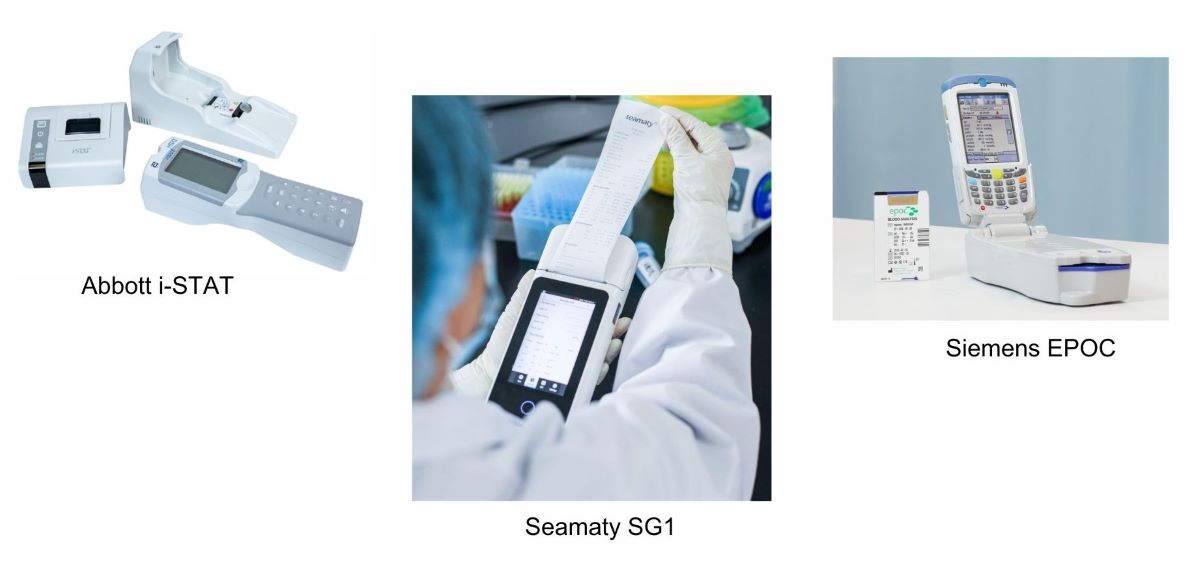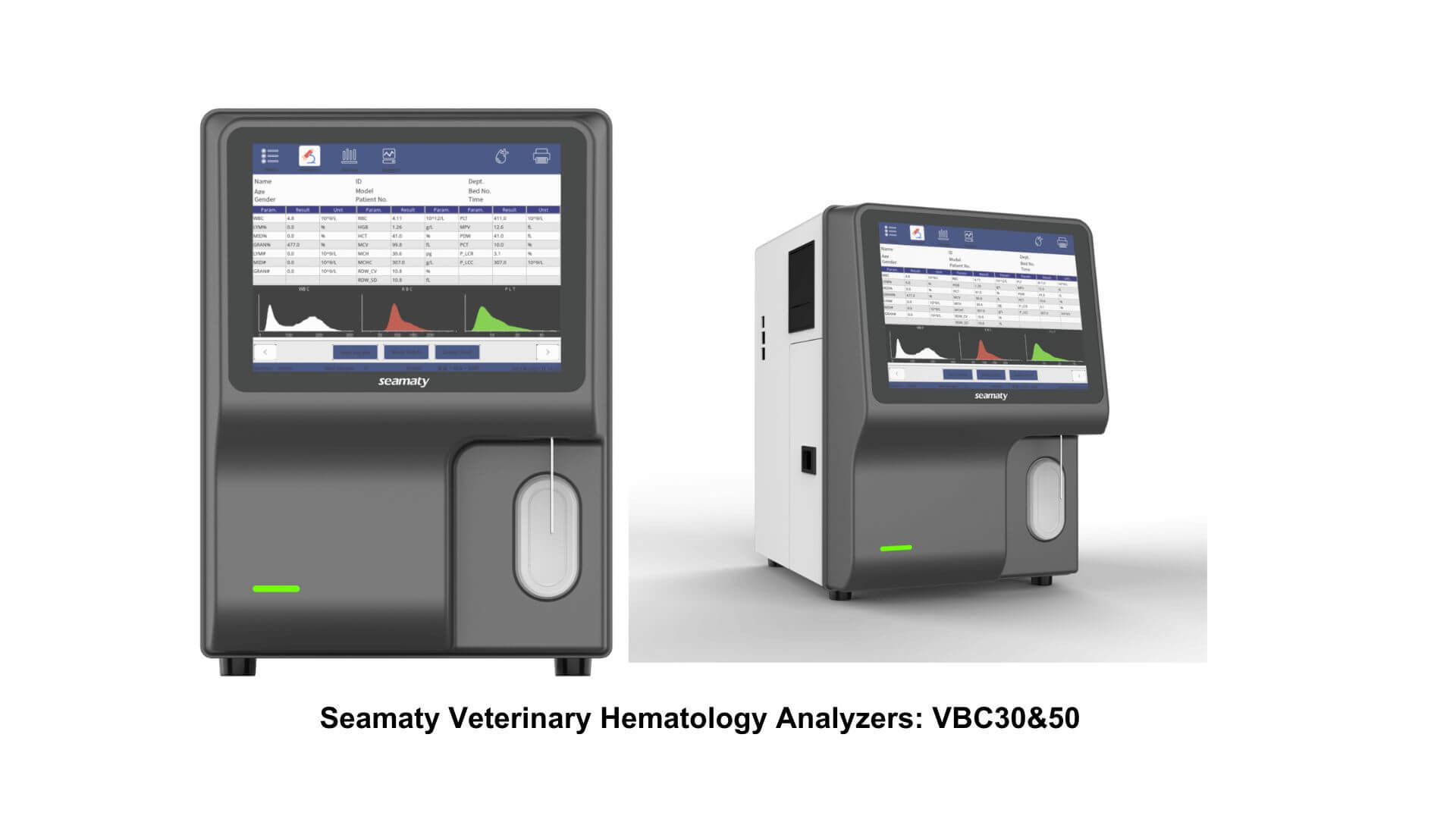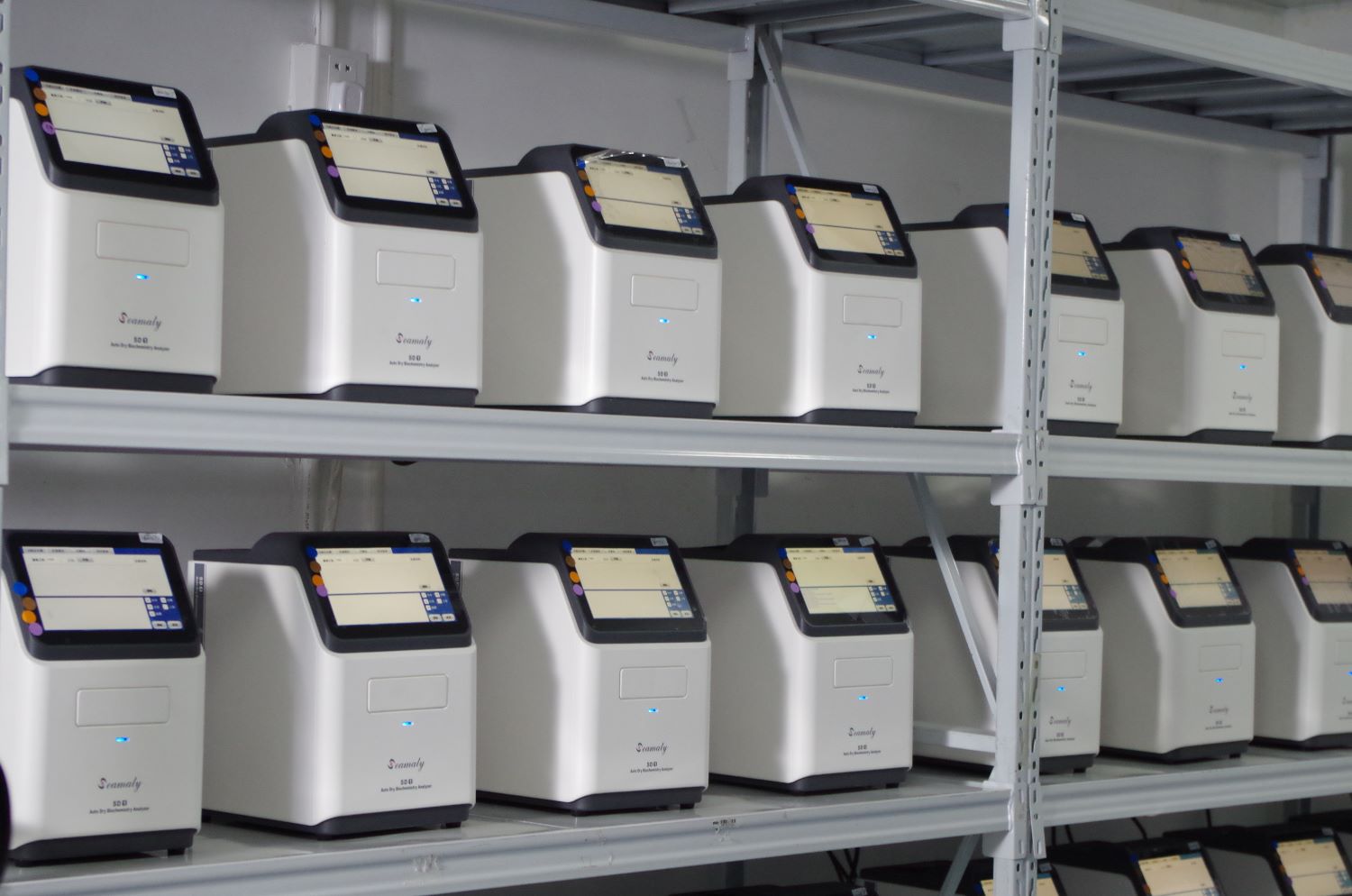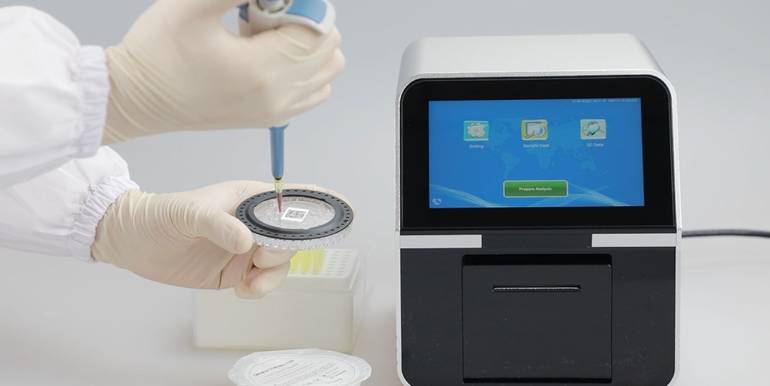release time:2023-12-20 14:46:33
Blood gas analysis is a common clinical method used to assess a patient's acid-base balance, oxygenation status, and electrolyte levels. While traditional blood gas analysis is conducted in laboratories, handheld blood gas analyzers have become increasingly popular with technological advancements, finding widespread use in emergency, intensive care, and home care settings. Currently, three mainstream handheld blood gas analyzers in the market are Abbott i-STAT, Siemens EPOC, and Seamaty SG1. This article provides a detailed comparison of these three instruments to assist users in making an informed purchase. 
Handheld blood gas analyzers offer the following advantages:
Advantages:
- High market recognition.
- Fast testing time, only 2 minutes.
- Wide range of parameters, including blood gases, electrolytes, biochemistry, and coagulation.
- Relatively small sample volume, ranging from 17-95ul.
Disadvantages:
- Requires an operating environment between 16-30℃, may not be suitable in extreme conditions.
- Operation is relatively complex, using buttons instead of a touchscreen.
- Requires an external printer.
- Relatively high price.
Advantages:
- Fast testing time, only 35 seconds.
- Reagent cards can be stored at room temperature for 6 months.
- Tests multiple parameters, including sodium, potassium, calcium ions, pH, pCO2, pO2, hematocrit, lactate, and blood glucose.
Disadvantages:
- Manual sample addition during the testing process, making it relatively complex.
- Uses buttons instead of a touchscreen for operation.
Advantages:
- Touchscreen for intelligent and easy operation.
- Automatic calibration, no need for manual card insertion, built-in QR code for automatic calibration.
- Built-in printer for convenient report printing.
- Simple operation, no need for manual sample addition during the process.
- Long shelf life for reagents, 12 months under refrigeration, and 7 months at room temperature.
- Rich variety of reagent card parameters, including 10 biochemistry, 8 blood gas electrolytes, 7 blood gas electrolytes, 5 electrolytes, and 3 blood gases.
- Built in high-capacity battery, 180 days of ultra long standby time.
- Compact and lightweight, weighing only 600 grams for easy carrying.
- Cost-effective.
Disadvantages:
- Slightly fewer parameters in testing.
- Slightly slower testing time.
|
Feature |
Abbott i-STAT |
Siemens EPOC |
Seamaty SG1 |
|
Testing Time |
2 minutes |
35 seconds |
4 minutes |
|
Sample Volume |
95ul |
92ul |
100ul |
|
Operation |
Button-based |
Button-based |
Touchscreen |
| Battery Life |
External power supply required, relatively short lifespan |
External power supply required, relatively short lifespan |
Built in high-capacity battery, 180 days of ultra long standby time |
|
Calibration |
Manual |
Automatic |
Automatic |
|
External Printer |
Required |
Required |
Built-in |
|
Reagent Storage |
240 days refrigerated, 2 months at room temp |
6 months at room temp |
12 months refrigerated, 7 months at room temp |
|
Parameters Tested |
Blood gases, electrolytes, biochemistry, coagulation |
Sodium, potassium, calcium ions, pH, pCO2, pO2, hematocrit, lactate, blood glucose |
Biochemistry, blood gas electrolytes, electrolytes |
|
Cost |
Relatively high |
Relatively high |
Cost-effective |
Abbott i-STAT is recognized in the market with a wide range of parameters and a small sample volume but requires an operating temperature of 16-30℃, operates with buttons instead of a touchscreen, needs an external printer, and is relatively expensive.
Siemens EPOC offers fast testing, longer reagent storage at room temperature, but involves manual sample addition, complex operation and button-based operation.
Seamaty SG1 stands out with a touchscreen, automatic calibration, built-in printer, simple operation, no manual sample addition, long reagent shelf life, low error rate, rich variety of reagent card parameters, portability, and cost-effectiveness. However, it tests slightly fewer parameters and has a slightly slower testing time.
When choosing a handheld blood gas analyzer, users should consider their specific needs and circumstances. If rapid and accurate results are crucial, Abbott i-STAT or Siemens EPOC may be the better choice. For those prioritizing simplicity and cost-effectiveness, Seamaty SG1 is a viable option.
Recommended further reading:
1. Top 8 Blood Gas and Electrolyte Analyzers in 2024: Brands, Features, Prices
2. Decoding Blood Gas Analyzers(BGA): Selecting, Applications, and Top 6 Picks
2. Portable Blood Gas Analyzers: Empowering Remote Healthcare and Emergency Medical Services
3. A Cost-Effective Alternative to the Abbott i-STAT: Seamaty SG1 Blood Gas&Electrolyte Analyzer
4. Not all Blood Gas Analyzers are Suitable for POC Testing, Here's Why
5. Seamaty SG1 Blood Gas Analyzer: A Must-Have for Small Clinics

2023-07-19
Discover the top 5 reasons why Seamaty Veterinary Hematology Analyzers are essential for your clinic. Enhanced diagnostics, cost-effectiveness, user-friendly design, space-saving solution, and broad applicability await!

2023-06-12
Explore the vital role of quality control in biochemical analyzers, ensuring accurate diagnostic results. Learn about internal quality control (IQC), components like control materials and calibration, and the impact on diagnosis and result comparability across laboratories. Optimize patient care with rigorous quality control measures in biochemistry analyzers.

2021-09-02
POCT (point-of-care testing) can break through the limitations of testing professionals, space, and testing time, eliminating the need for sample processing, sample delivery, equipment testing, data processing, and data transmission. It is a method to obtain test results instantly and quickly.